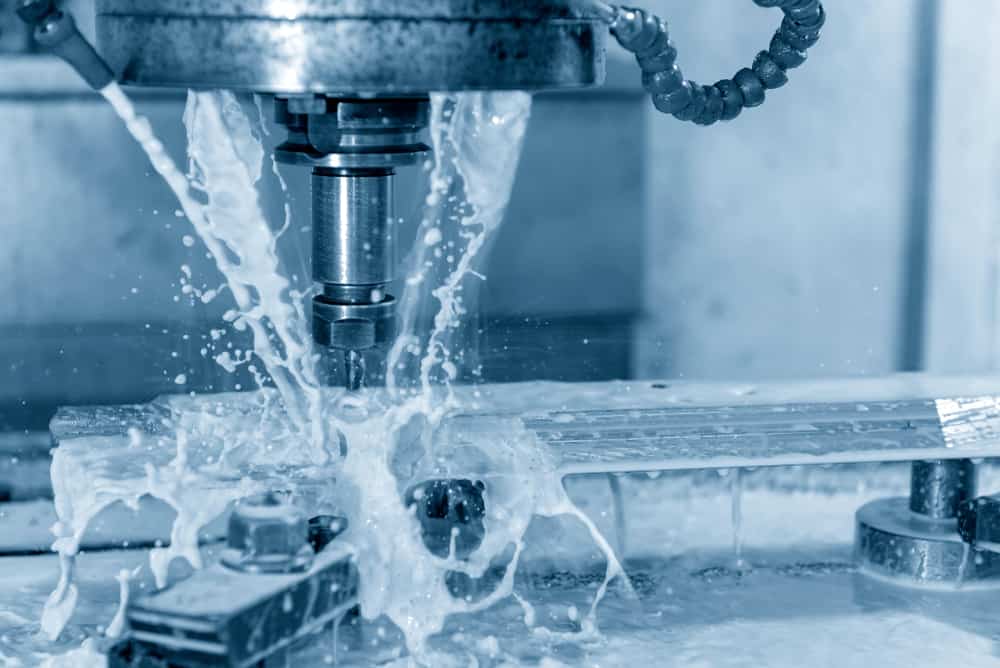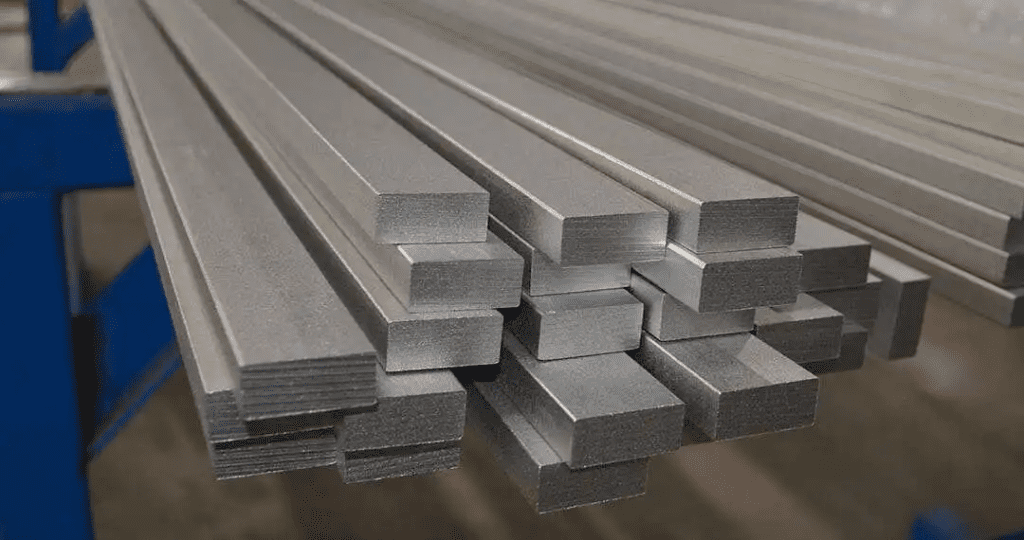Just because Computer Numerical Control (CNC) machining is an automated process doesn’t mean you can just press a button and make a perfect CNC machined part. There are a lot of inputs to a machining process: the workpiece material, tool type, fixture, cutting fluids, toolpath, and speeds and feeds are all variables that affect the quality of the CNC machined parts.
While experience is the best teacher, it doesn’t hurt to have a few CNC machining tips and tricks under your belt because of the steep learning curve. In this post, we’ll go over a few CNC machining tips and tricks to help both new and experienced machinists achieve the best results possible.
Use the Right Tool for the Material
No matter how nice your CNC machine is, it can only be as good as the tooling paired with it. Proper tool selection is essential for clean cuts and better-quality surface finishes. Plus, choosing the right tool for the job leads to longer tool life and maximum ROI.
You get what you pay for, so avoid cheap cutters and low-quality tooling. That doesn’t mean you must spring for expensive, professional-grade cutters—just look for well-known, reasonably-priced brands such as Kennametal or Sandvik. Avoiding cheap cutters and starting with high-quality tools now will help you avoid problems later.
CNC tooling comes in a wide variety of materials, including:
- Cast iron.
- Low-carbon steel.
- Alloy steel.
- Tool steel.
- Stainless steel.
- Tungsten carbide.
- Nickel-based superalloys.
- High-temperature alloys.
Each of these materials behaves differently. For example, tungsten carbide cutters resist wear better than steel, but they’re more brittle. On the other hand, high-speed steel (HSS) cutters can hold a sharper edge than carbide, though they don’t last as long.
| Science Fact: The first CNC machine was developed in the 1940s and 1950s, revolutionizing manufacturing by transitioning from manual control to automated, programmed commands. |
Use the Right Cutting Fluid—And Keep It Clean

When machining metal, the friction between the cutting tool and the workpiece generates heat. This can have several undesirable effects, including:
- Thermal expansion.
- Work hardening.
- Oxidation.
- Welding of surfaces (galling).
The cutting fluid cools and lubricates the tool and the CNC machined parts, reducing friction and heat to prevent these effects. Lubrication also protects the tool from abrasion and lowers energy consumption.
There are different types of cutting fluids, but just like the oil in your car, the most important thing is to replace it when it gets dirty. Clean coolant increases tool life, reduces foaming and odors, and protects your skin from damage. Overusing dirty cutting fluid can stain parts, requiring additional cleaning and making your machining process more extensive. Residue can also build up on the tool and machine components, causing damage, or on the window, obstructing your view.
|
Buy Certified High-Quality Metals for Industrial Solutions |
||
|
New Aluminum |
New Steel |
New Stainless Steel |
 |
 |
 |
| Reliable supply: Consistent, certified aluminum stock you can trust. High-quality material: Superior-grade aluminum for precision needs. Custom cuts: Accurate cuts down to thousandths of an inch. |
Durability and strength: Reliable for projects needing long-lasting, tough materials. Cost-effective: Quality steel that offers strength without breaking the bank. Custom cutting: Precise cuts tailored to exact needs with top-tier cutting tools. |
Sustainability: Highly eco-friendly as the most recyclable metal on earth. High durability: Resistant to corrosion and wear, ensuring long-lasting performance. Custom precision cuts: Tailored to your specifications with quick, accurate results. |
Take Time for Fixturing and Workholding
Setup and fixturing are time-consuming. It can be tempting to rush through this step to get to the actual CNC machining, but paying adequate attention to workholding up front will save you a lot of time and effort.
The more rigid your workholding, the more precise your CNC machined parts will be. This is especially true in CNC milling, where the cutting tool exerts a significant sideload pressure on the workpiece.
That doesn’t mean you need to design a custom fixture for every part—although that might be worthwhile for a high-volume part. A quality vise, a clamping kit to mount it to the T-slots of your table, and a set of parallels to keep your workpiece evenly raised are enough to adequately keep parts in place for most jobs.
Know Your Speeds and Feeds
Before running any CNC machining program, it’s essential to understand tool cutting speeds and feed rates, or “speeds and feeds.” Speeds and feeds are variables used in every milling and turning operation, and how you set them will depend on several factors, including the workpiece material, tool material, and tool size.
What are speeds and feeds? Feed refers to the linear speed of the tool or the workpiece (whichever one is moving), expressed in units of surface feet per minute (SFM). Speed refers to the rotational speed of the tool (in milling operations) or the workpiece (in turning operations), expressed in rotations per minute (RPM).
The tool manufacturer’s recommended parameters are the best place to start when setting speeds and feeds. After that, it’s up to the eyes, ears, and experience of the machinist.
Learning to adjust speeds and feeds on the fly takes practice. A feeds and speeds calculator can help you set optimal parameters based on materials, tooling, machine power, and other variables.
Start with Quality Material
It might sound obvious, but one of the best CNC tips and tricks we can give you is to start with high-quality, precision-cut metal. No matter how good your technique is, you won’t get good results machining a block of low-quality, cheap steel. Furthermore, if you’re not precise with your raw material size, you’ll end up wasting a lot of stock material cutting it because of the high material removal rate—not to mention the added time and tool wear.
Getting high-quality metal for CNC machining doesn’t have to be expensive. If you find a local metal supplier (or one that offers nationwide shipping) that resells metal remnants, you can get high-quality alloys at a heavy discount. Technologies like x-ray fluorescence (XRF) spectrometry can even be used to verify the exact composition of the alloy.
To minimize waste and costs, find a metal supplier that will precision-cut material to size. This will save you a lot of time and money that would otherwise be spent trimming down material or turning unnecessarily large workpieces into useless chips.
Addressing Common CNC Machining Challenges
CNC machining often presents unique challenges that can affect the quality and efficiency of manufacturing processes. One common issue is when a CNC machine can’t run slowly enough for specific materials and tools. This can be resolved by using cutting tools with modern coatings that withstand higher temperatures, enabling faster spindle speed.
Another challenge is aluminum buildup on machine tools, which can be mitigated with proper lubrication methods. Deep pockets in workpieces can cause tool deflection; adopting High-Speed Machining (HSM) toolpaths helps manage this.
By integrating these solutions into your CNC programming, you can enhance the overall performance and reliability of your CNC machine tools and manufacturing process.
Optimizing Material Removal Rates (MRR) and Tool Life in CNC Machines
Optimizing material removal rates (MRR) and tool life is crucial in CNC machines to improve efficiency and reduce costs. Using twist drills instead of end mills for certain tasks can significantly increase MRR. Finding the right balance between cut depth and width is key to maximizing the tool efficiency of a machinist.
Additionally, avoiding tool deflection and rubbing can substantially extend the life of machine and cutting tools. Implementing these strategies in CNC machining enhances the overall effectiveness and sustainability of the manufacturing process.
CNC Machine Maintenance Checklist
Maintaining the optimal performance of CNC machines is crucial for ensuring precision and longevity in CNC machining. Regular maintenance not only enhances the machine’s efficiency but also prevents costly breakdowns and extends its service life.
Below is a streamlined CNC Machine Maintenance Checklist that outlines key maintenance tasks.
| Maintenance Task | Frequency | Last Performed Date | Next Due Date |
| Lubrication | Weekly | [Date] | [Date] |
| Belt Tension Check | Monthly | [Date] | [Date] |
| Calibration Verification | Monthly | [Date] | [Date] |
| Spindle Alignment | Quarterly | [Date] | [Date] |
| Coolant System Clean | Biannually | [Date] | [Date] |
Note: Dates should be filled in according to the specific maintenance schedule of the CNC machine in use. For example, if your spindle alignment maintenance was last performed on January 1, 2024, the next due date should be April 1, 2024, in accordance with the quarterly maintenance schedule.
Practice these CNC Machining Tips and Tricks with Affordable, Precision-Cut Metal
While most metal suppliers process metal purchases in three to four weeks, Industrial Metal Service can cut your material to size within a few days. Our MetlSaw NF12-T12 can easily cut large, non-ferrous metals up to 12 feet long and 12 inches thick while holding tight tolerances up to ± 0.065″. Our Amada PCSAW 530 X band saw with pulse-cutting technology also gives us the capability to cut specialty metals like titanium to precise tolerances.
We’ve been a trusted metal supplier to machine shops and fabricators in the San Francisco Bay Area and beyond for more than two decades. We supply both new metals sourced from U.S. mills and verified metal remnants at discounted prices. With our extensive inventory, we can help you find exactly what you need for your CNC machines and beyond.
 Angle
Angle Cast Plate
Cast Plate Diamond Plate
Diamond Plate Flat Bar
Flat Bar Plate
Plate Round Bar
Round Bar Square Bar
Square Bar Square Tubing
Square Tubing Round Tubing
Round Tubing Angle
Angle Channel
Channel Diamond Plate
Diamond Plate I Beam
I Beam Round Bar
Round Bar Sheet
Sheet Square tubing
Square tubing Round Tubing
Round Tubing Rectangular Tubing
Rectangular Tubing Plate
Plate Rectangular Bar
Rectangular Bar Rectangular Tubing
Rectangular Tubing Round Bar
Round Bar Sheet
Sheet Square Bar
Square Bar Square Tubing
Square Tubing
